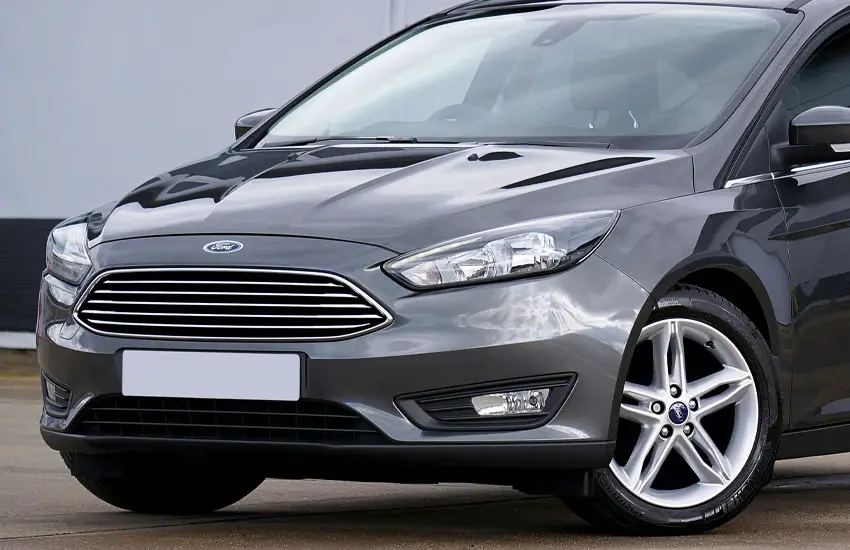As an Amazon Associate, I earn from qualifying purchases at no extra cost to you.
Automated Manual Transmission Explained: Quick Guide!
You might have heard about Automated Manual Transmission (AMT) but aren’t sure what it really means. Don't worry; you’re not alone! AMT is like a mix between a manual and an automatic transmission. It gives you the best of both worlds. You get the ease of driving an automatic but with some control like a manual.
In this article, we’ll break down how AMT works in simple terms. You'll learn how it can make driving smoother and more fun without needing to be a car expert. Whether you’re thinking of buying a car with AMT or just curious, this guide will help you understand it better.

What is an Automated Manual Transmission (AMT)?
An Automated Manual Transmission (AMT) is a type of car transmission that combines features of both manual and automatic transmissions. It is designed to make driving easier and more convenient.
In a manual transmission car, you have to change gears yourself using a clutch pedal and gear stick. An automatic transmission, on the other hand, changes gears for you, so you don’t need to use a clutch pedal. An AMT mixes these two ideas. It has a manual gearbox but uses an automated system to control the clutch and gear changes.
This means that with an AMT, you don't have to press the clutch pedal or shift gears manually. The car does this for you automatically. However, it still uses the manual gearbox inside, which can help with fuel efficiency.
AMTs are often found in small cars and city vehicles because they are more affordable and simpler than full automatic transmissions. They are also a good choice if you want to enjoy some of the control of a manual transmission but with less effort.
Overall, an AMT provides a balance between ease of use and the efficiency of a manual transmission. It is a great option for drivers who want a mix of both worlds.
How Does an Automated Manual Transmission Work?
An automated manual transmission is a type of car transmission that combines features of both manual and automatic transmissions. It is designed to make driving easier while still offering some control over the car’s gears.
Here’s how it works:
In a regular manual transmission, the driver must change gears manually using a clutch pedal and gear stick. This can be tricky and requires a lot of skill. On the other hand, an automatic transmission does this job for the driver. It changes gears automatically based on the car’s speed and power needs.
An automated manual transmission (AMT) tries to blend these two systems. It has a clutch and gears just like a manual transmission. However, unlike a traditional manual, the AMT uses sensors and a computer to handle the gear changes. This means the driver does not need to use the clutch pedal or shift gears manually.
Here's how it works in simple terms:
- Sensors: The AMT has sensors that monitor the car’s speed, engine power, and other important factors.
- Computer: The data from the sensors is sent to a computer system. This computer decides when to change gears.
- Actuators: The computer controls actuators that operate the clutch and gear stick. Actuators are small devices that can move parts of the transmission without the driver touching them.
When you drive, the AMT automatically shifts gears based on how fast you’re going and how much power you need. You don’t need to press the clutch or shift gears yourself. This makes driving easier and can also improve fuel efficiency.
In summary, an automated manual transmission makes driving simpler by combining the benefits of manual and automatic transmissions. It uses technology to manage gear changes, so you can focus more on the road and less on shifting gears.
Advantages and Disadvantages of Automated Manual Transmission
Advantages of Automated Manual Transmission
1. Easier to Drive
AMT is easier to drive than a traditional manual transmission. You do not need to press a clutch pedal or change gears manually. This makes driving in traffic or on long trips less tiring. You can focus more on the road and less on shifting gears.
2. Better Fuel Efficiency
AMT can be more fuel-efficient than a regular automatic transmission. It uses less fuel because it changes gears at the right time for the engine. This can help you save money on gas. It combines the efficiency of a manual transmission with the convenience of an automatic.
3. Lower Maintenance Costs
AMTs often have lower maintenance costs compared to traditional automatics. They have fewer moving parts and do not require regular fluid changes like automatic transmissions. This can make them cheaper to maintain over time.
4. Smooth Gear Changes
Modern AMTs can provide smooth gear changes. The system is designed to shift gears smoothly, which can make your ride more comfortable. You won't feel the jerks or delays that sometimes happen with older automatic systems.
Disadvantages of Automated Manual Transmission
1. Slower Gear Shifts
One downside of AMT is that gear changes can be slower compared to newer automatic transmissions. This can make the car feel less responsive, especially when you need to accelerate quickly. It may not be as quick as some fully automatic systems.
2. Limited Control
With AMT, you have less control over gear changes. Although you can sometimes manually override the system, it is not as flexible as a full manual transmission. If you prefer complete control over shifting gears, you might not like AMT as much.
3. More Complex than Manual
AMTs are more complex than traditional manual transmissions. They have a computerized system that controls the gears. If something goes wrong, repairs can be more complicated and costly compared to a simple manual gearbox.
4. Can Be Less Engaging
Driving an AMT can be less engaging for people who enjoy the feel of changing gears themselves. If you love the hands-on experience of a manual transmission, an AMT might feel less exciting. It takes away some of the driving experience that comes with a manual car.
Automated Manual Transmissions offer both benefits and drawbacks. They make driving easier and can save on fuel and maintenance costs. However, they may be slower in shifting gears and offer less control compared to traditional manuals. Understanding these pros and cons can help you decide if an AMT is right for you.
I hope this guide helped you understand Automated Manual Transmission. It combines the ease of an automatic with the control of a manual. If you're thinking of driving one, you now know how it works and what to expect. Happy driving and stay safe on the road!











